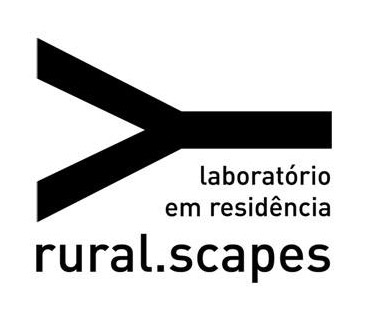Listening processes at rural.scapes #labRes2016_2
by Mariela Cantú – critic in residence
“Good or bad, I have always noticed what I notice now when arriving in the countryside: silence. But silence is not the lack of noise, but the direct and soft harmony of many noises we are not used to, which shape precisely the silence of the countryside. […] These noises do not distract, but abstract, because they are not noises that interrupt silence, but rather noises that shape it.”
(González, 1984, pp. 277-278)
São Paulo, Brazil. Paulista Avenue, approximately eight o’clock at night. Hundreds of persons run escaping from the police, who have pepper sprayed everybody a few minutes before. We are among them. We stop in front of a restaurant, in order to catch our breath and find a friend who got lost due to the intense running. In silence, we take a look around. Many protesters exchange bewildered glances. Other people, perhaps indifferent to the situation, keep walking while they carry their shopping bags. Several homeless people try to guess what has just happened. The ones who get off late from work, quicken their pace without looking at the sides, in order not to loose the public transport back home.
Amidst all those body movements, one in particular stands out. It is the body of a lady who, still with an agitated breath, is staring at us. Without approaching us, she begins to shout at us and to gesticulate. “This is all your fault! Idiots! The only thing you do is watching Rede O Globo 1 ! You are all part of this coup d’etat!” In our perplexity, we cannot reply. That we are not for violence, that just like her, we were also running from the gases. Confuse feelings invade us. But we listen. And during our way back home, I think that getting ready to listen, just to listen, can become a risky situation.
Fazenda Santa Teresa, headquarters of rural.scapes’ laboratory and residence, holds the potentiality of offering an ideal environment for experimenting the complexity and the versatility of listening processes. Not by chance, most of the artists who have been part of this experience during October 2016 included the sound environment as a fundamental matter in their projects. Derivas sonoras, by Patricio Dalgo Toledo, carried out several open collective workshops, field recordings and the creation of sound instruments, made from native materials – for instance, bamboo canes. One of the main challenges faced by this project was that of generating processes with the local people. Which new elements –and coming from which concrete practices, could be revealed for the person who lives in a specific sound scape? Could some form of new knowledge emerge for the ones who, we believe, are more accustomed to that environment than the newcomers? However, the apparent simplicity of a microphone was enough for other habitants of the place to tell their stories: strictly speaking, none of them have ever heard the surprising sound made by bitu 2.
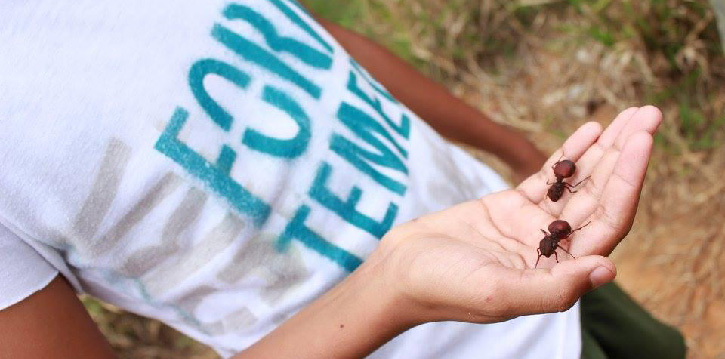
> Listening to a territory often involves dealing with disorientation, with moments of bewilderment and with the revelation of time as an indispensable factor from which to learn how to inhabit a place –just like the dancer who rehearses until he or she memorizes with all of his or her body. Tatiana Travisani and De Co Nascimento also took a chance on listening as one of the pillars of their project, and on embracing disruption as a part of its vital force. Even though the starting point of their project dealt with the utilization of existing maps of the region (although, as every map, in a partial way), one of the main focuses pointed towards the creation of other cartographies which, far from intending to the achievement of a universal codification of the space, could enable the inscription of affective paths, of memories, of personal (and collective) traces, that would inscribe knowledge and wishes of the community about the territory. In addition, those maps and records were translated as visual marks, in the form of small perforations along paper strips, to be later transformed into melodies, played by small music boxes.

On the one hand, this process enabled the possibility of surpassing the perception of mappings and cartographies as practices merely anchored to visuality, when considering how a territory sounds –and not only how it looks. “To listen with your fingers, your back or your chin, to see with your feet, to explore noises with your articulations, how to valorize this transient mobility?”3 On the other hand, I believe it is crucial to highlight the way these actions also dealt with listening to the space in a way that could open up to the collective –as opposed to a supposed individuality of the experience of a territory. Far beyond the sole creation of a collective composition built with melodies drawn by the workshops’ participants (that was in fact played for them in one of Fazenda Aberta’s events), a fundamental part of this process was based on knowledge and perceptions shared by the community, and on rehearsing ways in which they could mix into an open set – as opposed to the concept of the map as the imposition of an hegemonic, unequivocal and top-down power, that often determines the experience of a territory, even before actually exploring it.
Even though she prefers not to resort to the notion of translation to reflect upon her own work, Sandra De Berduccy / aruma used the permutation of materials in different supports in Llimphiri: Variaciones electroquímicas. Based on the idea of generating electrochemical experiences, Aruma’s project resorts to the extraction of natural dyes, which she would later affect with electricity. The result is that “a sort of chromatography is generated, since electrical current decomposes the tint solution, revealing the chromatic spectrum which composes it” 4. As in DeCo and Tatiana’s work, Aruma has also wandered around the terrain of the unexpected: the result of the intentional variations can never be predicted.
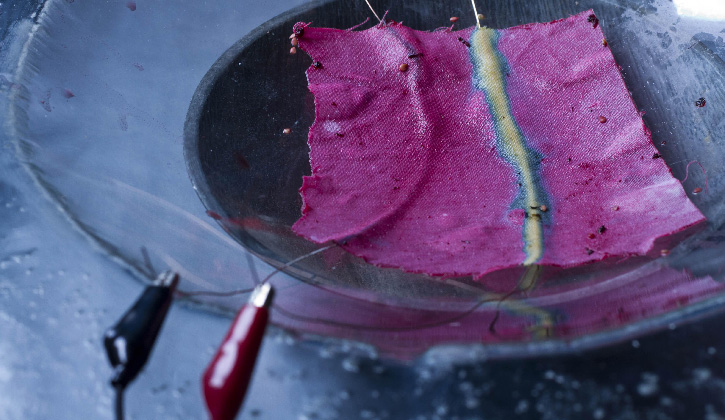
Needless to say, all of the projects were influenced by modifications –desired or not, though always unexpected ones. An environment can never be a decorated scene or a mere backdrop, particularly when we open up ourselves to becoming involved with other people. In the same way as presented on the opening anecdote of this text, the desire to become involved through listening and dialogue can imply a certain degree of risk, often related to dealing with expectations, (mis)understandings and the potentiality of detachment. The project Sonorização de corpos táticos, by Tiago Rubini, was intended as a “set of techniques for dissenting bodies to interfere in the space in an ostensive and poetic manner”5, and it has been the result of three previous works, Monitoreo de la Resistencia Galvánica Anal, dildos orgánicos comestibles and estridente. Despite the fact that these analog devices have been elaborated and improved during the residency, I have the feeling that it was their field of application which most modifications suffered. Part of Tiago’s proposal dealt with the possibility of using them as part of a project to interfere the public space which, at least within the Fazenda, resulted in quite a complex category. In addition, his proposal was also framed as a potential activism exercise for a community of non-heteronormative people, which did not seem to exist as a settled community at Sao José de Barreiro. However, the discovery of a different set of potentialities was possible. Even though a settled community could not be detected (at least when resorting to the usual parameters through which we consider or classify them in big cities), various singularities met to dialogue in several workshops and presentations coordinated by Tiago –in which creations ranging from analog sound devices to natural makeup emerged. Also, organic edible dildos (“plausible to be electronically voiced bodies”6), would take into consideration the interaction with and between beings and technologies -and not necessarily human beings, deepening a non-speciesist perspective, within an environment that indispensably nourishes itself from such relations.
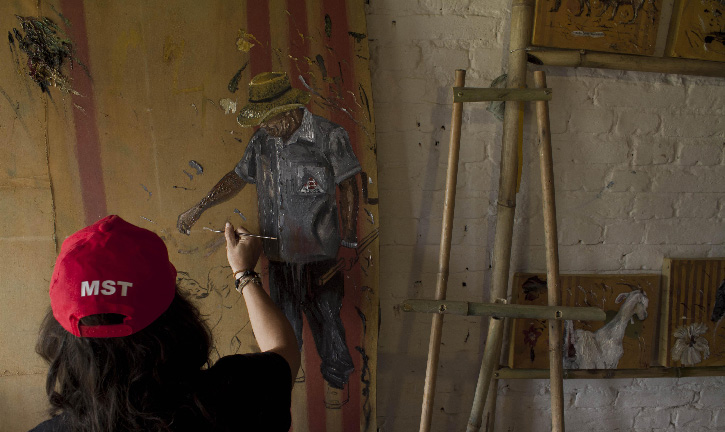
A tecnologia rudimentar da pintura galhofa, by Camila Soato, also relied on contact with the community as its starting point, resorting to the recollection of burlesque stories from the popular imagination of the region, collected in periodical conversations with the inhabitants. Due to a variety of reasons, transportation to the surrounding towns was far from regular, which resulted in a change of focus to the community that was actually living in the Fazenda. Among all members, Zé Mineiro, the person in charge of various labors at the Fazenda, was one of the main supporters of Camila’s work, not only in relation to compiling life stories and anecdotes that were later transformed into paintings, but also in relation to a permanent dialogue with the territory -materialized in the construction of painting frames and natural pigments.
In this sense, the relation between Camila and Zé managed to combine the narration and the inscription of oral stories, starting from a guided gathering of elements that could be useful in the elaboration of the materials that she would use in her paintings. The notion of observation has been usually associated with a preeminence of visuality, “something Le Breton calls the sensory hegemony of sight”7, all of which deepens a hierarchical relation with the rest of the senses that can become involved in the (re)cognition of an object, a being or a situation. From my perspective, these types of collaborations can complement that paradigm, incorporating listening and dialogue as vital elements of the visual work.
Hábitat II, by Marcio Hirokazu Shimabukuro a.k.a Shima, also intended to establish a relational system, that would cover the preparation of a cook book inspired on the dialogues and shared work with Dona Cida at the Fazenda’s kitchen. The proposal involved the joint preparation of the food for all the artists in the house, together with the person in charge of the kitchen for several of the past editions of the lab-res. However, this fundamental space for knowledge exchange was affected by communication breakdowns, which resulted in Dona Cida’s leave and, consequently, the transformation of Shima into the sole worker at the kitchen. As expected, this whole process was far from harmonic, which was nonetheless transformed into a potentiality by Shima, especially during the week in which he stopped communicating verbally.
Needless to say, the possibility of listening goes hand in hand with the possibility of inhabiting silence. “[S]ilence is capable of generating a displacement from the center of listening; in many occasions, it is translated into one’s own interior.”8 Given the fact that listening can be thought of as a cultural acquisition, life without speaking can also enable a new form of learning, made possible by the displacement of a naturalized point of listening –usually focused on the outside, and perceived as a passive act.
The fact that one of the inhabitants of the house has kept silence supposes, almost necessarily, the renewal and alteration of existing dynamics, from the proliferation of several messages written by Shima in various supports, to the magnification of body language and pointing at sectors of the house previously ignored as inhabited listening points –by a diversity of ears, bodies and subjectivities.
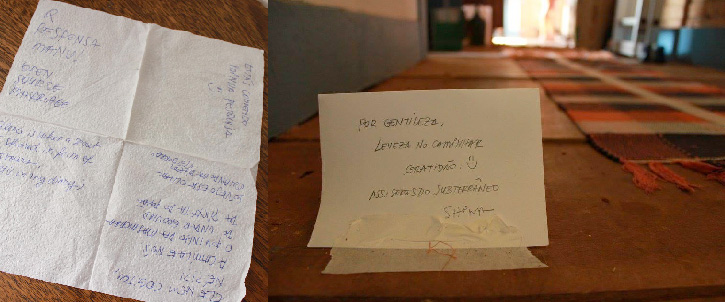
> Thus, this displacement of a listening point previously considered as an individual one, changed from being a practice reduced to the kitchen and a relation between Shima and Dona Cida, to a living experience of the whole house and its surroundings. As expected, the modification of the house dynamics did not only affect the daily routine of the house labors, since time devoted to them needed to be shared by all the artists. Far beyond a mere distribution of labors –done by a single person, and later shared by a collective, Dona Cida’s leave involved the need for a new set of decisions (that required to be made collectively), and the resulting manifestation of desires and personal interests, disconformities, agreements and proposals that claimed to be listened to.
Regarding this project, I still consider it is necessary to reflect upon the reasons that forced the modification of its initial proposal. Despite practicing them daily, I believe we still need to denaturalize the art of listening and dialogue, exercising them as attitudes rather than actions. Human relations are never guaranteed, they can never be predicted. How to surpass the colonial category of the “Other”? How to approach that person who remains an enigma, without resorting to shallow slogans such as “I am…”, “Je suis…” (and all their idiomatic variations)? Or, as appointed by López Rodríguez, “[w]hat to listen to? But, above all, how to listen?”.9
By crossing elements of Tiago, Camila and Shima’s work, Rosemary Lee’s project wandered around the paths of anti- speciesism, the combination of listening and detachment from visuality, and silence. Mapping the Wasp was presented as a site-specific installation, which could account for the interaction between humans, animals, plants and machines, within the environment of Fazenda Santa Teresa. Her installation could be considered as one of the least invasive projects, since Rosemary found an environment already containing four of the elements she was interested in, as a result of several careful walks around the place. The small ecosystem of an old abandoned rainwater tank thus became Mapping the Wasp’s platform, to which Rosemary contributed with the construction of a rainwater container that irrigated the interior of the tank. “… [M]ost times, we speak in order not listen, we sing in order not to listen, and we even listen in order not to listen…”10, artist Diego Makedonsky told me during a conversation a few days ago. How to position ourselves (artists, researchers, activists, and people) in relation to the processes that pre-exist us? Which is the limit between an intervention and the subjugation (and even, the risk of a total interruption) of ongoing processes?
I have the feeling that listening holds the potentiality of overcoming the particularity of an individual. If the experience of sound always exists as a relation –no object can sound unless activated by the energy of a vibratory movement, a listening body is a necessary part of the symphony of a living, collective, relational system. In that sense, and in the sense addressed by the artists who were part of this edition of rural.scapes, listening can be established as a field in which risk participates in a vigorous manner. Fortunately, to let oneself be permeated by sound of the outside can affect our constructions of the world; it can allow us to experiment rejection; it can face us with deep debates around the places we occupy –and how we do it. In order to experiment this system, of course, it is necessary to escape from everyday listening, while trying to reach a mutable practice that seeks to suspend, at least momentarily, fast interpretations or the superposition of our own values. And to begin this task, a good reminder by Ramón Gómez de la Serna: “[s]ometimes, silence signals for us to be quiet, even quieter that we already were.”11
1 In Brazil, one of the largest and more influential media corporations.
2 In Brazil, the name of an insect also known as iça.
3 Criton, Pascale. “O ouvido ubiquo”. In Cadernos de Subjetividade / Núcleo de Estudos e Pesquisas da Subjetividade do Programa de Estudos Pós–Graduados em Psicologia Clínica da PUC–SP. n.14, 2012. Pg. 31. (trad. de la autora)
4 Extracted from Aruma’s proposal for rural.scapes’ lab res. (Author’s translation)
5 Extracted from Tiago Rubini’s proposal for rural.scapes’ lab res. (Author’s translation)
6 Idem.
7 Garriga Inarejos, Rocío. “El silencio audible: de la escucha asombrada a la escucha generativa” en Arte y Politicas de la Identidad. vol 7 / Dic. 2012. p.66. (Author’s translation)
8 Garriga Inarejos, Rocío. Op. Cit. p.65. (Author’s translation)
9 López Rodríguez, Juan Gil. “La escucha múltiple”. En Quintana. Revista de Estudos do Departamento de Historia da Arte, núm. 8, 2009, Universidad de Santiago de Compostela. p. 310. (Author’s translation)
10 During an online chat, on November 15th 2016.
11 Gómez de la Serna, Ramón. Total de Greguerías. 1962, p. 727. (Author’s translation)
